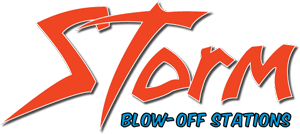Safety IS a Core Value
Over 70% of companies use compressed air for their manufacturing, production or institutional use. Compressed air generation is very inefficient with over 80% of the energy used to generate compressed air going to heat.
With the use so extensive, one would believe that the use of compressed air is safe -so much so that often the dangers of its use are disregarded. Compressed air misuse has caused severe and even fatal injuries even with the use of compressed air guns.
Companies do their best to prohibit the misuse of compressed air given the dangers. However, the prevalence of compressed air sometimes causes the safety precautions to be overlooked or even ignored.
The dangers of compressed air should never be taken lightly.
Walk through a typical manufacturing plant and you will see numerous compressed air blow guns. Typically, these guns are used for blow-off or cooling. Unfortunately, they can also be used in an unsafe manner. Flying particles can be projected at high speeds with compressed air when used for blow-off. Many injuries occur in this manner.
OSHA regulates the use of compressed air with their regulations. Although they currently permit the use of compressed air on workers-with a 30 PSI limit and chip guard installed- this practice should be avoided. Compressed air should never be used to remove dirt or dust from clothing, skin or body. The opportunity for misuse and injury is too great.
Open hoses are one of the leading causes of noise in many manufacturing environments. The extreme decibel rating (up to 130 dB) leads to hearing damage as they far exceed the levels set by OSHA (90 dB maximum). Hearing protection should always be worn around compressed air.
The incidence of eye injuries has mandated the use of safety glasses. 40 PSI of compressed air can project particles into the skin with devastating injurious results. As low as 10 PSI of compressed air can cause a flying particle to penetrate the skin.
With few exceptions, cleaning with compressed air is not allowed in Europe or Canada. While OSHA has classified a limit of 30 PSI as reasonably safe, many companies today are coming to the decision that any compressed air for cleaning or clean-off purposes is dangerous and therefore are looking for ways to eliminate or replace this practice.
Storm Blow-Off Stations off the safest alternative to clean-off or dedusting of workers, uniforms and work-spaces. The advantages of safety, cost savings and noise reduction contribute to the core value of safety for every company.
